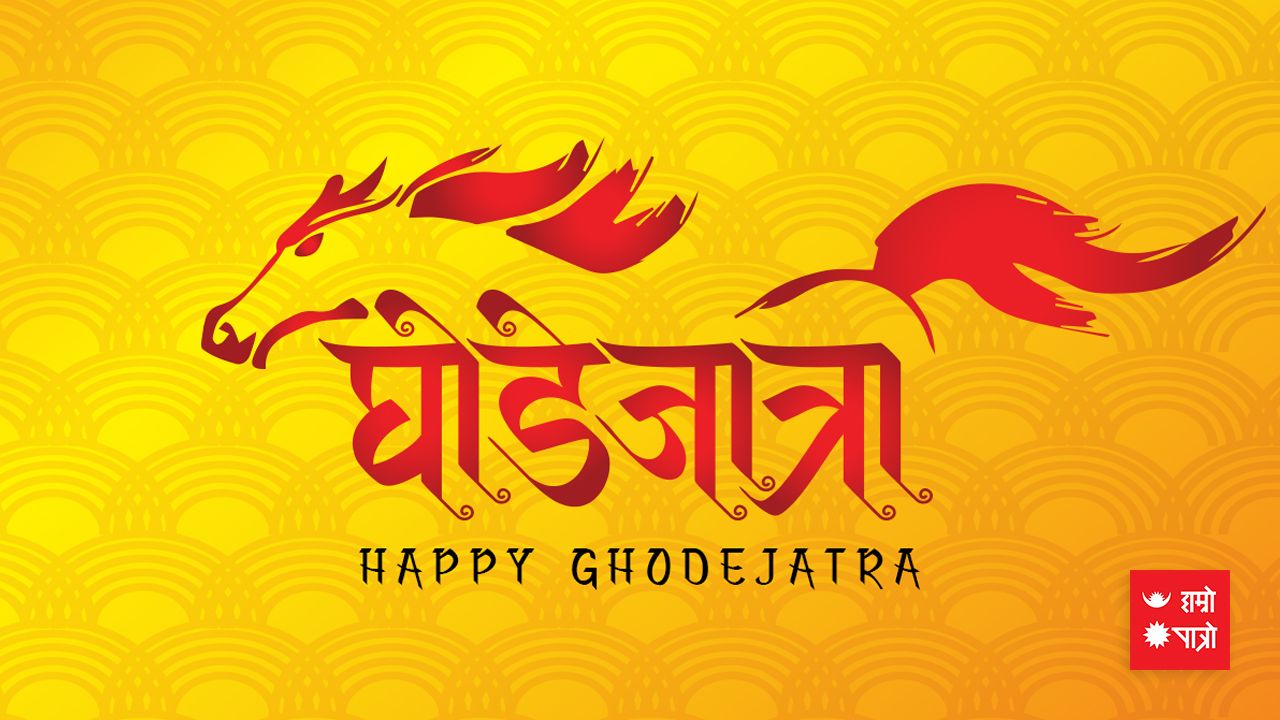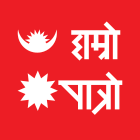Upcomming Events
-
19Mangsir
-
21MangsirInternational Civil Aviation Day 2 days remaning
-
22MangsirInternational Dignified Menstruation Day 3 days remaning
-
23MangsirInternational Anti-corruption Day 4 days remaning
-
24MangsirInternational Human Rights Day 5 days remaning
-
25MangsirInternational Mountain Day 6 days remaning
-
26MangsirGorakhkali Puja/International Day of Neutrality 7 days remaning
-
29MangsirSafala Ekadashi Vrata 10 days remaning
-
1PaushDhanu Sankranti 11 days remaning
-
2PaushPradosh Vrata 12 days remaning
-
3PaushInternational Immigrants Day 13 days remaning
-
5PaushTol Lhosar 15 days remaning
-
6PaushWorld Meditation Day 16 days remaning
-
10PaushChristmas 20 days remaning
-
13PaushGorakhkali Puja 23 days remaning
-
15PaushTamu Lhosar/Kavi Siromani Lekhnath Jayanti/Putrada Ekadashi Vrata 25 days remaning
-
17PaushNew Year 2026/Pradosh Vrata/Topi Day/Poshak Day 27 days remaning
-
19PaushSri Swasthani Vrata Katha Prarambha/Maagh Snan/Poornima Vrata 29 days remaning
-
21PaushGuru Gobinda Singh Jayanti 31 days remaning
-
23PaushAraniko Smriti Day 33 days remaning
-
24PaushNepal Astrology Council Establishment Day 34 days remaning
-
27PaushPrithivi Jayanti/Rashtriya Ekata Diwas/Gorakhkali Puja 37 days remaning
-
29PaushNational Bhakka Day 39 days remaning
-
30PaushShattila Ekadashi 40 days remaning
-
1MaghMakar Sankranti/Ghiu chaku khane Din/Uttarayan Arambha 41 days remaning
-
2MaghNational Earthquake Safety Day/Pradosh Vrata 42 days remaning
-
5MaghSonam Lhochhar/Shree Ballav Jayanti 45 days remaning
-
8MaghTilkunda Chauthi 48 days remaning
-
9MaghBasanta Panchami vrata/Saraswati Pooja 49 days remaning
-
10MaghSkanda Sasti/Achala Saptami/International Day of Education 50 days remaning
-
11MaghGorakhkali Puja/World Leprosy Day 51 days remaning
-
12MaghInternational Custom Day 52 days remaning
-
13MaghDron Nawami 53 days remaning
-
15MaghBhima Ekadashi Vrata 55 days remaning
-
16MaghSahid Diwas/Pradosh Vrata 56 days remaning
-
18MaghShree Swasthani Brata Samapti/Poornima Wrata 58 days remaning
-
19MaghWorld Wetlands Day 59 days remaning
-
21MaghWorld Cancer Day 61 days remaning
-
25MaghRavisaptami Vrata 65 days remaning
-
26MaghGorakhkali Puja 66 days remaning
Jyotish
-
Jyotish Mohan Ghimireसम्पुर्णानन्द संस्कृत विश्वव...
-
Jyotish Smarika Acharyaबाल्मीकि बिद्यापिठ बाट ज्योत�...
-
Jyotish Narayan Prasad Gautamगुरुकुल शिक्षा प्रणालीबाट ज्�...
-
Jyotish Damodar Poudelनेपाल संस्कृत विश्व बिद्यालय�...
-
Jyotish Purushottam Ghimireनेपाल संस्कृत विश्वविद्यालय, �...
-
Jyotish Vaman Sapkotaशिक्षा - व्याकरणाचार्य, पौरोही...
-
 Jyotish Dharmendra Krishna Paudelशास्त्री धर्मेन्द्र कृष्ण पौ�...
Jyotish Dharmendra Krishna Paudelशास्त्री धर्मेन्द्र कृष्ण पौ�...
-
Jyotish Amrit Paudelवाराणसीकै सम्पूर्णानन्द संस्...
-
Jyotish Narayan Prasad Bhandariज्योतिषका उप-प्राध्यापक (lecturer of A...
-
 Jyotish Mukunda Sharmaस्वाध्याय, सत्सङ्ग र सदाचारजस�...
Jyotish Mukunda Sharmaस्वाध्याय, सत्सङ्ग र सदाचारजस�...
-
Jyotish Pandit Mukunda Nepalज्योतिष पण्डित मुकुन्द नेपाल�...
-
 Jyotish Kuresh Pandey११ वर्षको अनुभवसहित विभिन्न ध�...
Jyotish Kuresh Pandey११ वर्षको अनुभवसहित विभिन्न ध�...
-
Jyotish Krishna Prasad Bhandariउपप्राध्यापक (Asst. professor of Sanskrit) नेपा�...
-
Jyotish Deepak Prasad Kafleसम्पूर्णानन्द संस्कृत विश्वव...
-
Jyotish Dipendra Khatiwadaसम्पुर्णानन्द संस्कृत बिश्वब...
-
Jyotish Damodar Kaushikज्योतिष र व्याकरण विषयमा आचार�...
-
Jyotish Khageshwor Subediगुरुकुल पद्दति बाट ज्योतिषीय �...
-
Jyotish Ghanashyam Pokharelनेपाल संस्कृत विश्वविद्यालयब...
-
Acharya Choodamani Pathakसम्पूर्णानन्दसंस्कृत विश्वव�...
-
Jyotish Dr. Janak Bhattaविगत ३५ वर्षदेखि कुण्डली निर्�...
-
Jyotish Khagendra Subediसम्पूर्णानंद संस्कृत विश्ववि...
Ghodejatra

The history of human civilization, such as horse, horseback riding, horseback riding, travel, and warfare, has consistently described the relationship between horses and humans in various historical documents, and various myths about this relationship are still alive. Horses were the only reliable and fast means of transportation in Europe, America, Middle East Asia, and all over the world.
Horses were used in all the ancient great wars of the world, be it the Mahabharata War, the Battle of Napoleon Bonaparte, or the Mongol Conquests.
In the Vedic Sanatan rites, the horse is considered a very important animal. The most sacred yajna in the Vedic Sanatan rites is the Ashwamegh Yajna, in which hundreds of horses are freed and it is believed that peace, serenity, and happiness will prevail wherever the free horses reach.
A horse procession, Ghodejatra, is being celebrated in Kathmandu, the capital of Nepal today, with the respect and cooperation of these very loyal and fast-paced horses. Whether it is a statue or a picture commemorating the Rana rulers and various other warriors in different parts of Kathmandu, the presence of horses is essential.
From Napoleon to Kublai Khan and from Jung Bahadur to Mohan Shamsher, statues or pictures show the presence of a horse. As a traditional procession of Kathmandu, the horse procession has been continuously and continuously performed in Tundikhel of Kathmandu for ages. Today, Chaitra Krishnapaksha's Aunsi, on this day in Tundikhel, Kathmandu, among thousands of civilians, the Nepal Army and the Nepal Police perform horse parades, special parades, acts, and exercises.
Story behind the celebration of Ghodejatra.
In ancient times, a demon named Gurumapa, who lived in a tree on the east-south side of Tundikhel, used to go to the human settlements of the valley and cause misery and eat children. When this did not stop, the people of the valley began to look for ways to kill the monster. At the same time, there is a legend that the monster was trampled to death by a horse's hoof, and the tradition of celebrating the horse procession started as a celebration of this victory.
Even now, it is believed that the hoof of the running horse stops the spirit of the monster to come back. The elders say that if they do not do this, the ghost of the monster will wake up and cause a commotion in the city. On the other hand, the Nepali new year starts from Chaitra Shukla Pratipada every year. On the same basis, it is customary to welcome the new year on Chaitra Krishna Aunsi with the horse procession.
Ghodejatra: special story of Kathmandu and Patan
This is a piece of history, we are revealing it in Hamro Patro today. At that time, Kathmandu, Bhaktapur, and Patan were different states. The Manhara and Bagmati rivers served as the state's border.
King Pratap Malla of Kathmandu is the most powerful king of the Malla dynasty. He ruled for 33 consecutive years from 1698 BS to 1731 BS. He joined hands with the rebels to wage a civil war in Patan. King Pratap Malla, who did not have good relations with other states of the valley, also had a great quarrel with King Srinivasa Malla of Patan. At that time, the citizens of Patan used to come to Kathmandu to see the horse procession, the citizens of Kathmandu also used to go to Jawalakhel for Machhindranath's rath yatra and many other processions together.
It is said that there was a feud between King Pratap Malla of Kathmandu and King Srinivas Malla of Patan around 787 BCE. So King Srinivas ordered to run a horse procession in Bholakhya village of Patan so that the people of Patan will not go to see the horse procession in Kathmandu.
Although this Jatra of Patan was not as bright as that of Kathmandu, it proved to be a great pen for Patan's self-reliance. Thus, the horse procession of Patan started by King Srinivasa is still conducted in different environments and circumstances.
After the army performs the horse procession in Tundikhel, the farmers of the valley sow the seeds of vegetable crops like bean, bodi, soybean, and cucumber in their fields. At present, the horse procession is not limited to Kathmandu but is celebrated as a procession of national importance. Apart from Kathmandu, horse processions are also celebrated in Palpa, Dharan, and Butwal.
My utmost wishes, may smiles increase on this day.
Suyog Dhakal
Upcomming Events
-
19Mangsir
-
21MangsirInternational Civil Aviation Day 2 days remaning
-
22MangsirInternational Dignified Menstruation Day 3 days remaning
-
23MangsirInternational Anti-corruption Day 4 days remaning
-
24MangsirInternational Human Rights Day 5 days remaning
-
25MangsirInternational Mountain Day 6 days remaning
-
26MangsirGorakhkali Puja/International Day of Neutrality 7 days remaning
-
29MangsirSafala Ekadashi Vrata 10 days remaning
-
1PaushDhanu Sankranti 11 days remaning
-
2PaushPradosh Vrata 12 days remaning
-
3PaushInternational Immigrants Day 13 days remaning
-
5PaushTol Lhosar 15 days remaning
-
6PaushWorld Meditation Day 16 days remaning
-
10PaushChristmas 20 days remaning
-
13PaushGorakhkali Puja 23 days remaning
-
15PaushTamu Lhosar/Kavi Siromani Lekhnath Jayanti/Putrada Ekadashi Vrata 25 days remaning
-
17PaushNew Year 2026/Pradosh Vrata/Topi Day/Poshak Day 27 days remaning
-
19PaushSri Swasthani Vrata Katha Prarambha/Maagh Snan/Poornima Vrata 29 days remaning
-
21PaushGuru Gobinda Singh Jayanti 31 days remaning
-
23PaushAraniko Smriti Day 33 days remaning
-
24PaushNepal Astrology Council Establishment Day 34 days remaning
-
27PaushPrithivi Jayanti/Rashtriya Ekata Diwas/Gorakhkali Puja 37 days remaning
-
29PaushNational Bhakka Day 39 days remaning
-
30PaushShattila Ekadashi 40 days remaning
-
1MaghMakar Sankranti/Ghiu chaku khane Din/Uttarayan Arambha 41 days remaning
-
2MaghNational Earthquake Safety Day/Pradosh Vrata 42 days remaning
-
5MaghSonam Lhochhar/Shree Ballav Jayanti 45 days remaning
-
8MaghTilkunda Chauthi 48 days remaning
-
9MaghBasanta Panchami vrata/Saraswati Pooja 49 days remaning
-
10MaghSkanda Sasti/Achala Saptami/International Day of Education 50 days remaning
-
11MaghGorakhkali Puja/World Leprosy Day 51 days remaning
-
12MaghInternational Custom Day 52 days remaning
-
13MaghDron Nawami 53 days remaning
-
15MaghBhima Ekadashi Vrata 55 days remaning
-
16MaghSahid Diwas/Pradosh Vrata 56 days remaning
-
18MaghShree Swasthani Brata Samapti/Poornima Wrata 58 days remaning
-
19MaghWorld Wetlands Day 59 days remaning
-
21MaghWorld Cancer Day 61 days remaning
-
25MaghRavisaptami Vrata 65 days remaning
-
26MaghGorakhkali Puja 66 days remaning
Jyotish
-
Jyotish Mohan Ghimireसम्पुर्णानन्द संस्कृत विश्वव...
-
Jyotish Smarika Acharyaबाल्मीकि बिद्यापिठ बाट ज्योत�...
-
Jyotish Narayan Prasad Gautamगुरुकुल शिक्षा प्रणालीबाट ज्�...
-
Jyotish Damodar Poudelनेपाल संस्कृत विश्व बिद्यालय�...
-
Jyotish Purushottam Ghimireनेपाल संस्कृत विश्वविद्यालय, �...
-
Jyotish Vaman Sapkotaशिक्षा - व्याकरणाचार्य, पौरोही...
-
 Jyotish Dharmendra Krishna Paudelशास्त्री धर्मेन्द्र कृष्ण पौ�...
Jyotish Dharmendra Krishna Paudelशास्त्री धर्मेन्द्र कृष्ण पौ�...
-
Jyotish Amrit Paudelवाराणसीकै सम्पूर्णानन्द संस्...
-
Jyotish Narayan Prasad Bhandariज्योतिषका उप-प्राध्यापक (lecturer of A...
-
 Jyotish Mukunda Sharmaस्वाध्याय, सत्सङ्ग र सदाचारजस�...
Jyotish Mukunda Sharmaस्वाध्याय, सत्सङ्ग र सदाचारजस�...
-
Jyotish Pandit Mukunda Nepalज्योतिष पण्डित मुकुन्द नेपाल�...
-
 Jyotish Kuresh Pandey११ वर्षको अनुभवसहित विभिन्न ध�...
Jyotish Kuresh Pandey११ वर्षको अनुभवसहित विभिन्न ध�...
-
Jyotish Krishna Prasad Bhandariउपप्राध्यापक (Asst. professor of Sanskrit) नेपा�...
-
Jyotish Deepak Prasad Kafleसम्पूर्णानन्द संस्कृत विश्वव...
-
Jyotish Dipendra Khatiwadaसम्पुर्णानन्द संस्कृत बिश्वब...
-
Jyotish Damodar Kaushikज्योतिष र व्याकरण विषयमा आचार�...
-
Jyotish Khageshwor Subediगुरुकुल पद्दति बाट ज्योतिषीय �...
-
Jyotish Ghanashyam Pokharelनेपाल संस्कृत विश्वविद्यालयब...
-
Acharya Choodamani Pathakसम्पूर्णानन्दसंस्कृत विश्वव�...
-
Jyotish Dr. Janak Bhattaविगत ३५ वर्षदेखि कुण्डली निर्�...
-
Jyotish Khagendra Subediसम्पूर्णानंद संस्कृत विश्ववि...
Liked by:




















 Mesh
Mesh Brish
Brish Mithun
Mithun Karkat
Karkat  Singha
Singha  Kanya
Kanya Tula
Tula Brischik
Brischik Dhanu
Dhanu  Makar
Makar  Kumbha
Kumbha Meen
Meen